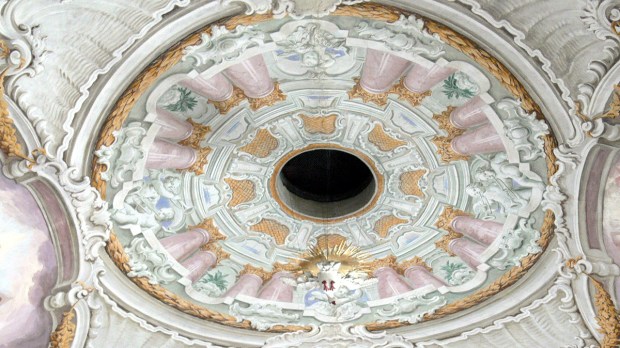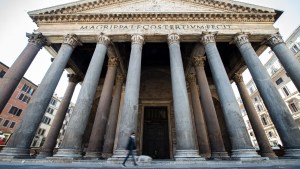One interesting bit of church architecture is known as the “Holy Ghost Hole.” It consists of a large opening purposely left in the ceiling.
This was most commonly done in medieval churches throughout Europe, but has been repeated in other places throughout the world.
The tradition was meant to remind the faithful of the coming of the Holy Spirit at Pentecost and to be a visible reminder that the Holy Spirit continues to descend upon Christian disciples.
This spiritual symbolism was further reinforced on Pentecost day, when someone would climb up to onto the roof and send down various symbols of the Holy Spirit.
Fr. Francis Weiser explains in his book Holyday Book that live doves or pigeons would sometimes be used, as well as burning pieces of straw.
In some towns of central Europe people even went so far as to drop pieces of burning wick or straw from the Holy Ghost Hole, to represent the flaming tongues of Pentecost. This practice, however, was eventually stopped because it tended to put the people on fire externally, instead of internally as the Holy Spirit had done at Jerusalem. In the thirteenth century in many cathedrals of France real white pigeons were released during the singing of the sequence and new around in the church while roses were dropped from the Holy Ghost Hole.
The “Holy Ghost Hole” is a fascinating medieval tradition, and the symbols dropped through it kept the people conscious that our faith is a union between the physical and spiritual realms.



